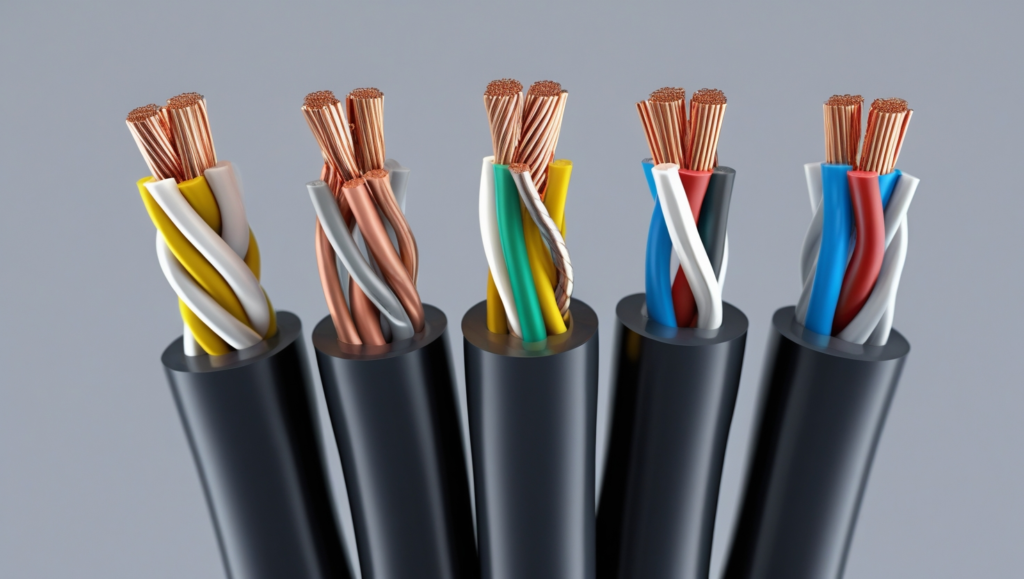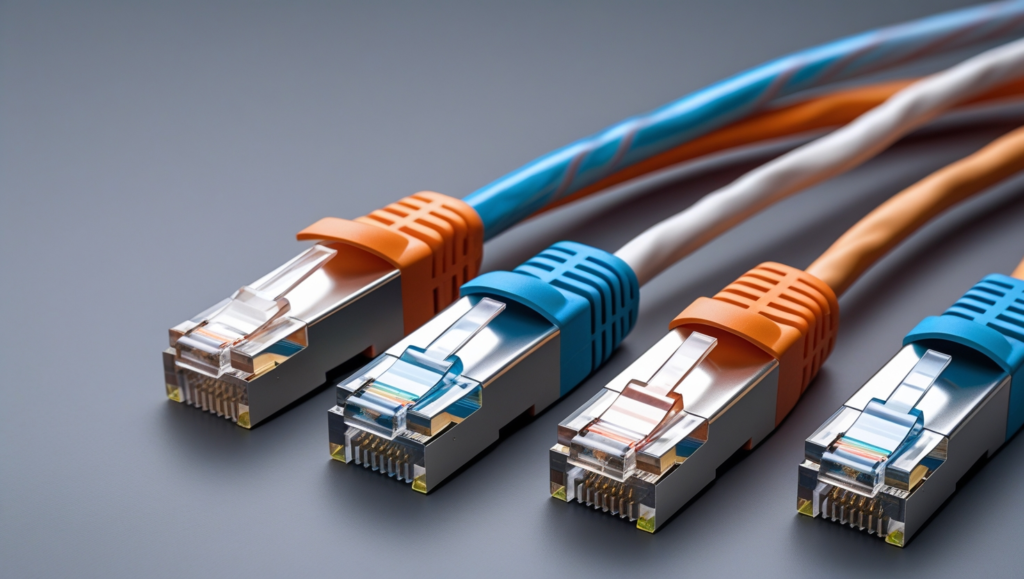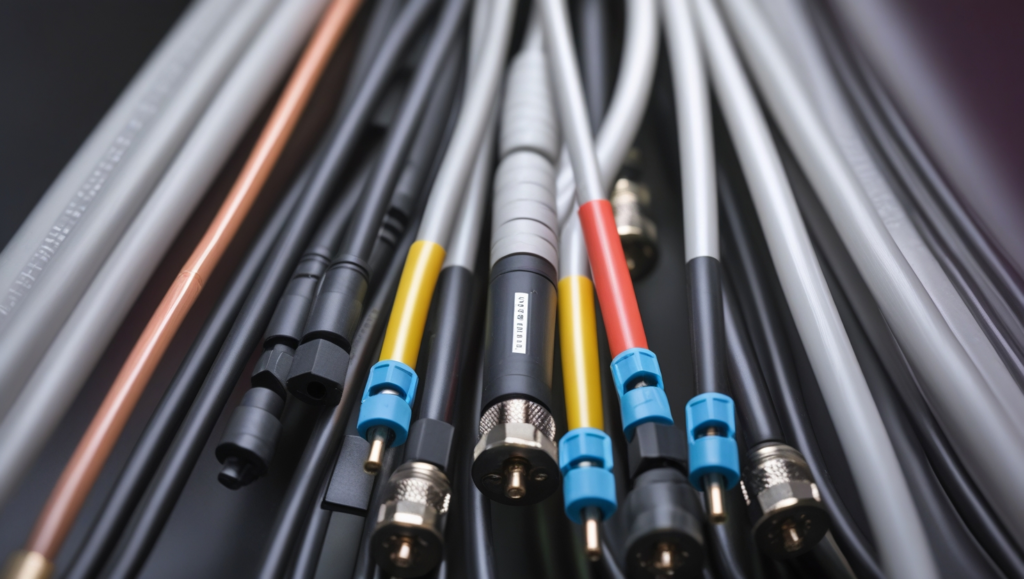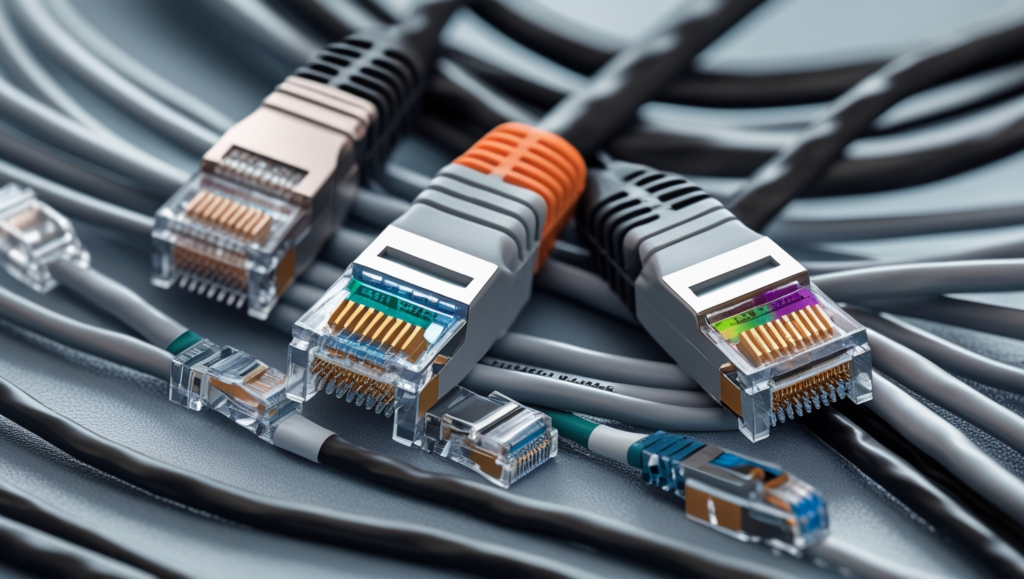Networking is the backbone of modern communication, connecting devices and systems across the globe. With the increasing reliance on digital communication, understanding the types of network cables is crucial for anyone involved in IT, networking, or even home setups. In this comprehensive article, we will delve into various types of network cables, their uses, advantages, and disadvantages.
Overview of Network Cables
Network cables are essential components in any network infrastructure. They provide the physical connection between devices, allowing data to be transmitted from one point to another. The choice of network cable depends on various factors, including the type of network, the required data transfer speed, and the distance between devices.
Importance of Choosing the Right Cable
Selecting the appropriate network cable is critical for ensuring optimal network performance. Using the wrong type of cable can lead to slower data transfer rates, increased latency, and potential connectivity issues. Therefore, understanding the different types of network cables and their applications is vital for building a reliable and efficient network.
Twisted Pair Cables

Twisted pair cables are one of the most commonly used types of network cables. They consist of pairs of insulated copper wires twisted together to reduce electromagnetic interference. Twisted pair cables come in two main varieties: unshielded twisted pair (UTP) and shielded twisted pair (STP).
Unshielded Twisted Pair (UTP)
Unshielded twisted pair (UTP) cables are widely used in Ethernet networks. They are cost-effective, flexible, and easy to install. UTP cables are available in different categories, each offering varying levels of performance. For example, Cat5e and Cat6 cables are popular choices for home and office networks due to their ability to support high-speed data transfer.
Specific use cases for Unshielded Twisted Pair (UTP):
- Home Networks: UTP cables are commonly used to connect routers, modems, and computers in home networks.
- Office Networks: Ideal for connecting office workstations, printers, and other networked devices.
- Voice Over IP (VoIP): Often used in VoIP phone systems due to their cost-effectiveness and ease of installation.
Shielded Twisted Pair (STP)

Shielded twisted pair (STP) cables are similar to UTP cables but include an additional shielding to reduce electromagnetic interference further. STP cables are often used in environments with high levels of interference, such as industrial settings or areas with significant electrical equipment. While more expensive than UTP cables, STP cables provide better performance in challenging environments.
Specific use cases for Shielded Twisted Pair (STP):
- Industrial Environments: Used in factories and industrial settings where high levels of electromagnetic interference are present.
- Data Centers: Suitable for environments with a lot of electronic equipment, providing better performance by reducing interference.
Coaxial Cables
Coaxial cables, also known as coax cables, have been used for decades in various communication applications. They consist of a central conductor, an insulating layer, a metallic shield, and an outer insulating layer. Coaxial cables are known for their durability and ability to transmit high-frequency signals over long distances.
Specific use cases for Coaxial Cables:
- Cable Television (CATV): Widely used to deliver cable TV signals to homes and businesses.
- Broadband Internet: Common in providing broadband internet connections through cable modems.
- RF Transmission: Used in applications like connecting antennas to radio receivers and transmitting radio frequency signals.
Applications of Coaxial Cables
Coaxial cables are commonly used in cable television (CATV) networks, broadband internet connections, and older Ethernet networks (10BASE2 and 10BASE5). They are also used in radio frequency (RF) transmission, such as connecting antennas to receivers. Despite being largely replaced by twisted pair and fiber optic cables in modern networking, coaxial cables remain relevant in specific applications.
Fiber Optic Cables

Fiber optic cables represent the cutting-edge of network cabling technology. They use light to transmit data, offering unparalleled speed and bandwidth capabilities. Fiber optic cables consist of a core made of glass or plastic, surrounded by a cladding that reflects light back into the core, and a protective outer layer.
Single-Mode vs. Multi-Mode Fiber Optic Cables
Fiber optic cables come in two main types: single-mode and multi-mode. Single-mode fiber cables have a smaller core and transmit data using a single light mode, making them ideal for long-distance communication with minimal signal loss. Multi-mode fiber cables, on the other hand, have a larger core and transmit data using multiple light modes, making them suitable for shorter distances with higher data transfer rates.
Advantages of Fiber Optic Cables
Fiber optic cables offer several advantages over traditional copper-based cables. They provide higher bandwidth, faster data transfer speeds, and greater resistance to electromagnetic interference. Additionally, fiber optic cables are more secure, as they are difficult to tap into without detection. However, they are also more expensive and require specialized equipment for installation and maintenance.
Specific use cases for Single-Mode Fiber Optic Cables
- Long-Distance Communication: Ideal for long-distance data transmission with minimal signal loss, such as inter-city or undersea cables.
- Telecommunications: Used by telecom companies to connect central offices and provide high-speed internet services over long distances.
Specific use cases for Multi-Mode Fiber Optic Cables
- Local Area Networks (LANs): Used in LANs for high-speed data transmission over shorter distances, such as within a building or campus.
- Data Centers: Common in data centers for connecting servers, storage systems, and network switches, providing high-speed connectivity over short distances.
Comparative Analysis of Network Cables
To better understand the differences between various types of network cables, let’s compare their key features in the table below:
| Cable Type | Speed | Distance | Interference Resistance | Cost | Applications |
|---|---|---|---|---|---|
| UTP (Cat5e, Cat6) | Up to 1 Gbps | Up to 100 meters | Moderate | Low | Home/Office Ethernet Networks |
| STP | Up to 1 Gbps | Up to 100 meters | High | Medium | Industrial Environments |
| Coaxial | Up to 1 Gbps | Up to 500 meters | High | Medium | CATV, Broadband, RF Transmission |
| Single-Mode Fiber | Up to 100 Gbps | Over 100 kilometers | Very High | High | Long-Distance Communication |
| Multi-Mode Fiber | Up to 10 Gbps | Up to 2 kilometers | High | High | Short-Distance, High-Speed Networks |
Conclusion
In conclusion, the choice of network cable plays a crucial role in the performance and reliability of any network. Understanding the different types of network cables, their advantages, and their applications can help you make informed decisions when designing or upgrading a network infrastructure. Whether you’re setting up a home network, an office environment, or an industrial setup, selecting the right cable will ensure optimal performance and connectivity.
By analyzing the various types of network cables, we can see that each type has its unique strengths and weaknesses. Twisted pair cables are versatile and cost-effective, making them suitable for most home and office networks. Coaxial cables remain relevant in specific applications, while fiber optic cables offer unparalleled speed and bandwidth for high-performance networks. By considering the specific requirements of your network, you can choose the best cable to meet your needs and ensure a reliable and efficient connection.

